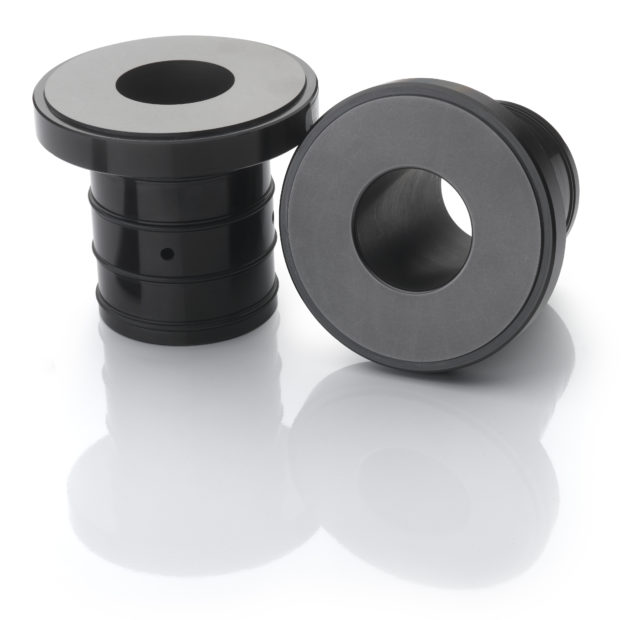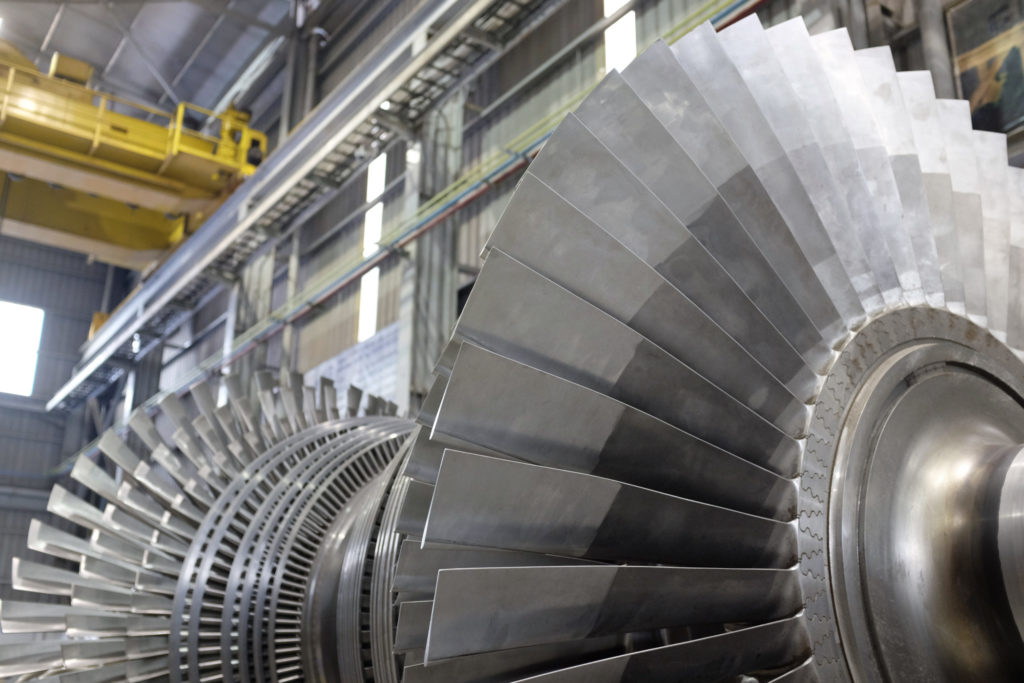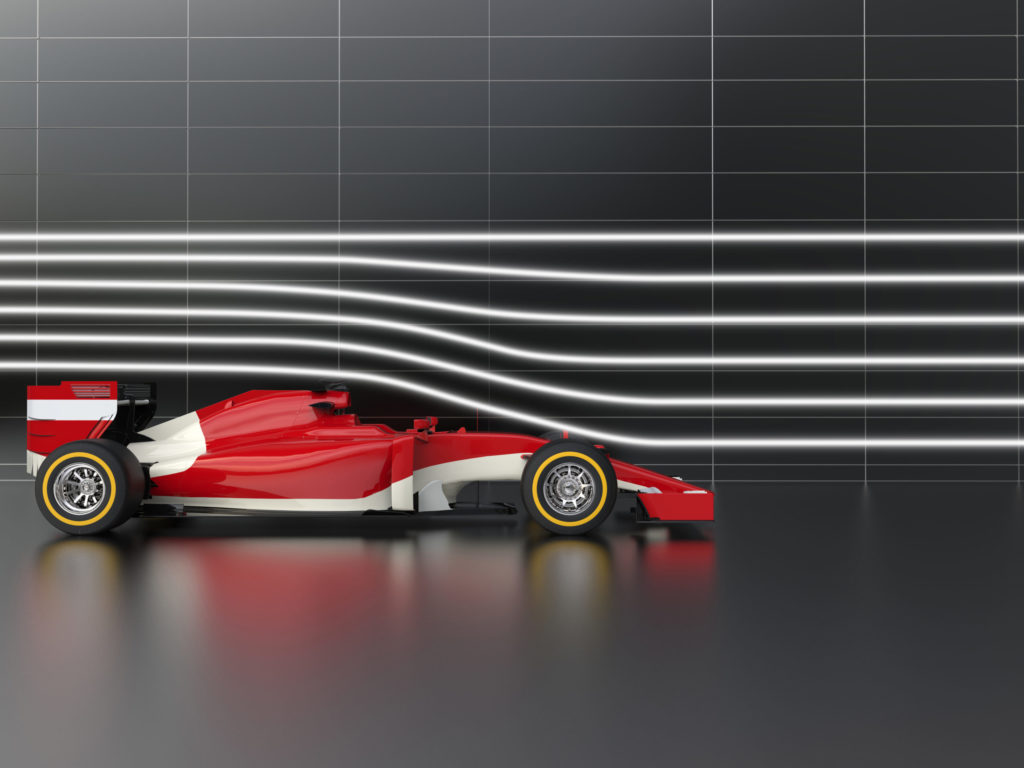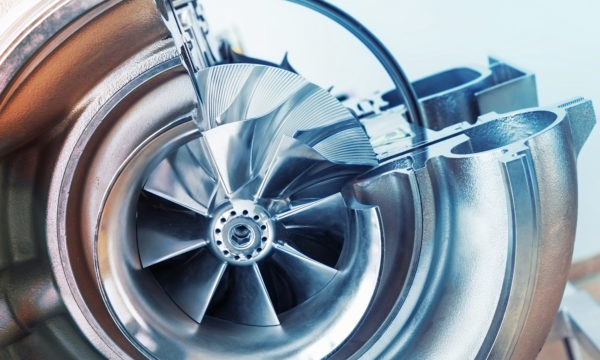New Way Air Bearings ® offers a wide array of products to meet your needs. Here, we want to illustrate the differences between our thrust bushings and air bushings. Both operate off of our proprietary Porous Media Technology™, allowing for near-zero coefficients of friction, speed, zero wear, and high acceleration. Thrust bushings and air bushings are each ideal for different sets of applications, and can act in concert to constrain a dynamic assembly along desired axes of motion.
Air Bushings
Air Bushings are designed for both linear and rotary motion, facilitating rail and shaft-based applications. By inverting our typical bearing structure and applying the porous media to the interior of the bearings, we allow for non-contact motion both rotationally and axially over a shaft. Only 60 PSi (0.4Mpa) is required to generate the 8 µm (0.0004″) layer of air the bearing travels upon. Additionally, owing to the nature of air as a fluid medium, the bushing naturally self centers about the shaft.
On a single shaft, air bushings can provide exceptionally fast translational and rotational motion, but air bushings can also be utilized on parallel shafts to replace recirculating ball slides. Co-polymer O-rings within the anodized aluminum housing blocks provide you the ability to pot the bearings in place with epoxy, and compensate for parallelism errors up to 0.002” along the length of the shaft.
Thrust Bushings
Thrust bushings evolved as an outgrowth of our air bushing lineup, and were developed to meet the needs of customers who needed to axially constrain a rotating component. The thrust bushing applies our Porous Media along the thrust face of the bearing, preventing linear motion. These were originally designed to assist in the development of custom air spindles, which have been further developed into our integrated Servo Driven Rotary Stages.
Thrust bushing-based spindle solutions provide extremely low synchronous error, and virtually zero asynchronous error. Axis of Metrology studies on these spindles have revealed an error motion below 2 millionths of an inch, making them ideal for rotary inspection stages where precision is paramount
Applications
Air bushings and thrust bushings can be applied in countless ways, limited only by your creativity and ingenuity. In the power generation sector, we’re seeing immense potential for radial air bearing solutions to enable shaft based power generation across legacy and emerging renewable technologies. This is enabled by a unique trait of porous air bearing technology; the positive correlation between stiffness and damping.
As the air gap decreases, the fluid medium (in this case air) is compressed, increasing it’s stiffness while also increasing damping. This positive correlation is functionally unheard of in machine design, and offers a wide range of possibilities to designers looking to integrate air bearings into their machine stages.
As an example of the possibilities of air bushings, Michael Chiu of MIT has already demonstrated their remarkable effectiveness in machine tools. Meanwhile, Luis Andres and Sung Hwa Jeung —supported by New Way founder Drew Devitt— quantifiably showed how air bearings increase the rotordynamic performance of a high speed shaft system. Effective immunity to resonant frequencies also increases the lifespan of shaft based systems, extending the benefits of porous media beyond the confines of its own assembly.
Outside of power generating capability, linear motion-restricted rotary bearings provide a massive benefit to automotive testing and development teams. Without the need to contend with the internal inertia of ball bearings, porous media provides you with true force dynamometry for the most accurate measurements possible.
Reliability
The reliability provided by air bushings and thrust bushings when compared to their counterparts almost can’t be understated. Unlike orifice bearings, they are not subject to the “pneumatic hammer” effect (See Technical Report 1, under Stability and Porous Compensation). And, Frictionless Motion®️ between shafts means no wear and tear; extending the lifespan of the bearing by millions of cycles.
Air bushings even prove superior when you consider the edge cases of catastrophic system failure. While spalled bearings can lock up and destroy a system, air bushings feature zero contacting dynamic components, and even if a power failure leads to a loss of your air supply. Instead, the air bushing will slowly depressurize, letting the system settle in a safe, controlled manner.
The surface of our bearings is made from a compressible carbon with a much higher compressibility than steel, aluminum or granite. This means any impacts will be absorbed by the easily replaceable bearing face, ensuring your guidway remains undamaged. Even in these situations, since the entire bearing face provides and distributes pressure evenly, a scratched air bushing can remain operational until you’re able to replace it.





